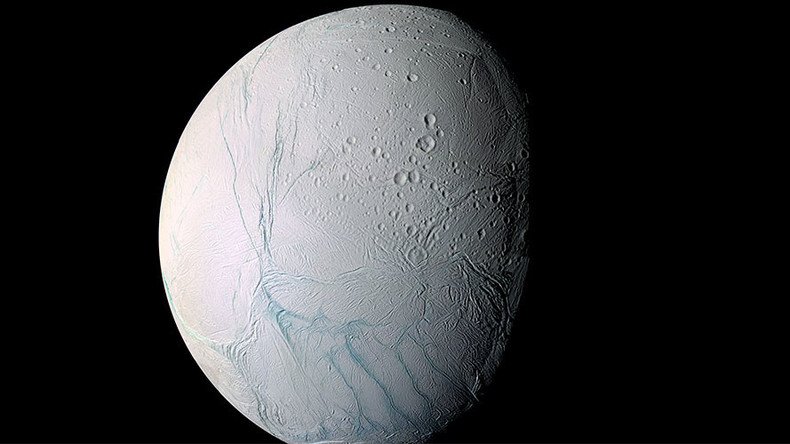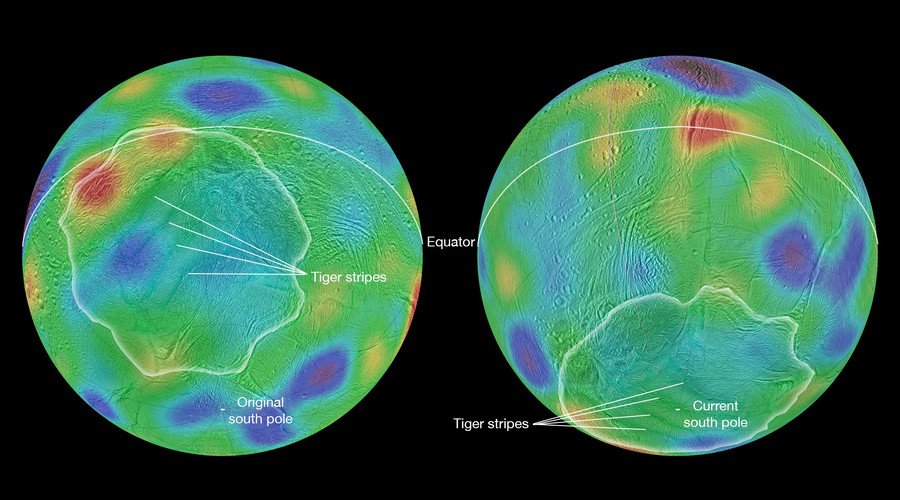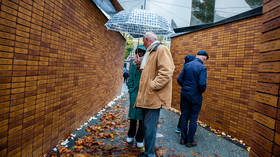Asteroid strike may have ‘tipped axis’ of Saturn’s moon (PHOTOS)

Saturn’s moon Enceladus may have been tipped after being struck an asteroid at some point in the distant past, according to research from NASA’s Cassini mission.
The team found that the moon appeared to have unsettled from its original axis by around 55 degrees – more than halfway toward rolling completely onto its side.

"We found a chain of low areas, or basins, that trace a belt across the moon's surface that we believe are the fossil remnants of an earlier, previous equator and poles," said Radwan Tajeddine, a Cassini imaging team associate.
Researchers have speculated that the area may have been struck by an asteroid in the past when it was closer to the equator.
"The geological activity in this terrain is unlikely to have been initiated by internal processes," Tajeddine said. "We think that, in order to drive such a large reorientation of the moon, it's possible that an impact was behind the formation of this anomalous terrain."
‘Tortured moon’: Scarred surface of Saturn’s Enceladus (Pic via @CassiniSaturn) https://t.co/luqeGGlnZLpic.twitter.com/6S1CW9VdL2
— RT (@RT_com) May 23, 2017
NASA scientists believe the disruption caused some of Enceladus' mass to be redistributed, making the moon's rotation unsteady and wobbly.
This likely took more than a million years to stabilize and, in the meantime, the north-south axis reoriented to pass through different points on the surface.
The mechanism, dubbed "true polar wander", helps explain why Enceladus' modern-day north and south poles appear quite different. Today, the south pole is active and geologically young, while the north is covered in craters and appears much older.
Saturn's moon Enceladus may support alien life - NASA (VIDEO)
The moon's original poles would have looked more alike before the disrupted tiger-stripe terrain was relocated to the moon's south polar region.
In April, NASA revealed the Cassini probe detected hydrogen from hydrothermal vents in ice plumes on Enceladus suggesting the moon may support microbial life.
The Cassini spacecraft is in its final exploratory mission of Saturn before it’s intentionally incinerated in the gaseous atmosphere this coming September.












